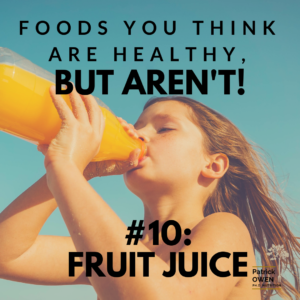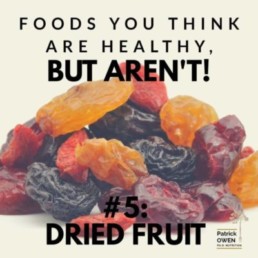
WHY WE THINK IT’S HEALTHY:
Many look forward to beginning their morning with a fresh glass of OJ. Drinking your fruit is way more convenient than having to go through the arduous process of peeling, slicing, biting, chewing, and swallowing. And, hey, the government says it’s the same thing as having a fruit. According to our national food guide, a seven ounce glass of 100% fruit juice is equivalent to a serving a fruit.
WHY IT’S NOT:
Though tasty and refreshing, fruit juice is not as healthy as the whole fruit. First, let’s differentiate between fruit juice and fruit drink. Fruit juice is made by mechanically squeezing the fruit and collecting its juice. If it’s sold as is, then the juice is “not from concentrate.” If the water is extracted from the juice (to facilitate bulk transport), and then reintroduced to the consumer packaging, then the juice is “from concentrate.” Both products are 100% fruit juice. Anything with less than 100% can’t be called a juice but, rather, a drink.
Some fruit drinks have as little as 10% fruit juice and contain added sugars, aromas and other additives. So, assuming you drink nothing but 100% fruit juice, the reason why it’s not as healthy is because the fiber and some of the nutrients have been removed. Fiber slows down the speed at which sugar enters your blood and reduces your insulin response. Take away the fiber and the sugars, and your juice will rush into your bloodstream and spike your blood glucose and insulin levels. Consider this: A medium piece of fruit has about 60 calories and can produce 4 ounces of juice. A typical serving of juice is usually 12 to 16 ounces, bringing up your calorie count to 960. The calories add up fast and certainly don’t help with fat loss. If you really want to drink your fruit, use a blender to keep the fiber and add water if it gets too thick.




